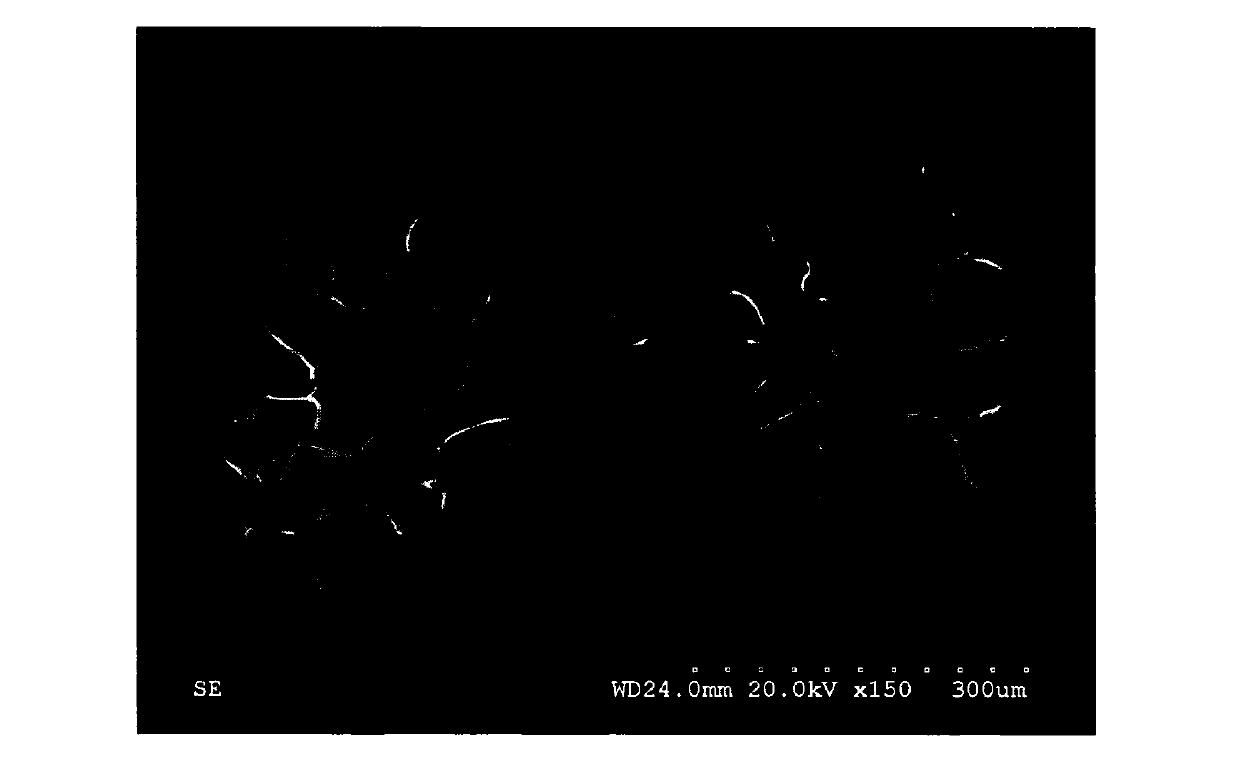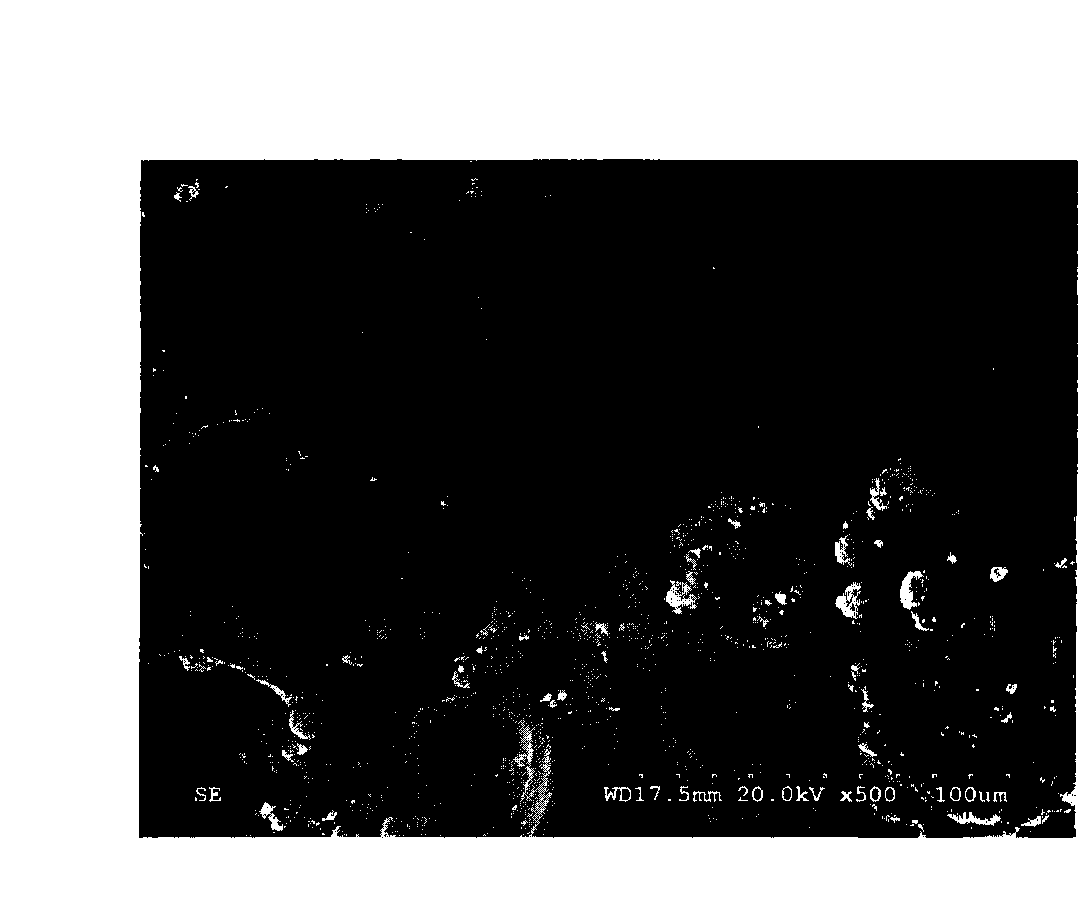Method for culturing hepatic cells on a large scale
A technology of emulsifier and base-based chitosan, which is applied in biochemical equipment and methods, tissue culture, immobilized enzymes, etc., can solve the problems of poor porous microcarriers, achieve high cell seeding efficiency, increase contact opportunities, Little damage to liver cells
- Summary
- Abstract
- Description
- Claims
- Application Information
AI Technical Summary
Problems solved by technology
Method used
Image
Examples
preparation example Construction
[0039] Preparation and Application of Macroporous Microcarrier
[0040] 1. Preparation of Macroporous Microcarriers
[0041] 1) Preparation of silk fibroin: boil raw silk in 5g / L sodium carbonate solution for 1 hour, then wash with a large amount of deionized water or distilled water to remove sericin, and dry at 60-70°C to obtain silk protein. Dissolve an appropriate amount of silk fibroin in a ternary solution of calcium chloride / water / ethanol (molar ratio 1:8:2) at 80±2°C, dialyze in deionized water or distilled water at room temperature for 3 days to remove the salt and ethanol, and filtered to remove insoluble impurities to prepare an aqueous solution of silk fibroin. Stir the silk fibroin aqueous solution at a low speed at 50±2°C, evaporate part of the water, and obtain a silk fibroin solution with a concentration of about 7-10w / v%, and set aside;
[0042] 2) Preparation of galactosylated chitosan (GC): take 2.2g chitosan, dissolve in 1.0%-2.5% acetic acid aqueous s...
Embodiment 1
[0055] Embodiment 1. Human liver cell line CL-1 cells were cultivated with silk fibroin / galactosylated chitosan under static / microgravity rotary culture;
[0056] 1. Configuration of complete medium: add 15ml of fetal bovine serum, 3.5mmol of HEPES, 10,000U of penicillin, and 10,000U of streptomycin for every 100ml of DMEN (high glucose type) medium
[0057] 2. Pretreatment of silk fibroin / galactosylated chitosan macroporous microcarriers: place 0.1g silk fibroin / galactosylated chitosan macroporous microcarriers in a 50ml plastic centrifuge tube, and use 0.1mol / L, After soaking overnight in phosphate buffered saline (PBS) with a pH of 7.0 and calcium and magnesium ions, suck out the PBS, and then wash with PBS for 3 times. Soak with the complete medium prepared in 1) for more than 10 hours, and set aside;
[0058] 3. Human hepatocytes (CL-1) cultured on silk fibroin / galactosylated chitosan macroporous microcarriers under static / microgravity rotation conditions
[0059]1. Mic...
Embodiment 2
[0064] Embodiment 2, Microcarrier cultivation of human liver cell line CL-1 cells under microgravity rotary culture (silk fibroin / galactosylated chitosan macroporous microcarrier SF / GC, solid microcarrier: cytodex 3);
[0065] 1. Configuration of complete medium: add 15ml of fetal bovine serum, 3.5mmol of HEPES, 10,000U of penicillin, and 10,000U of streptomycin for every 100ml of DMEN (high glucose type) medium
[0066] 2. Microcarrier pretreatment:
[0067] 1. Pretreatment of silk fibroin / galactosylated chitosan macroporous microcarriers: put 0.2g silk fibroin / galactosylated chitosan macroporous microcarriers in a 50ml plastic centrifuge tube, and use 0.1mol / L, After soaking overnight in phosphate buffered saline (PBS) with a pH of 7.0 and calcium and magnesium ions, suck out the PBS, and then wash with PBS for 3 times. Soak with the complete medium prepared in 1) for more than 10 hours, and set aside;
[0068] 2. Pretreatment of solid microcarriers (cytodex 3): put 0.25g ...
PUM
| Property | Measurement | Unit |
|---|---|---|
| particle size | aaaaa | aaaaa |
Abstract
Description
Claims
Application Information
 Login to View More
Login to View More - R&D
- Intellectual Property
- Life Sciences
- Materials
- Tech Scout
- Unparalleled Data Quality
- Higher Quality Content
- 60% Fewer Hallucinations
Browse by: Latest US Patents, China's latest patents, Technical Efficacy Thesaurus, Application Domain, Technology Topic, Popular Technical Reports.
© 2025 PatSnap. All rights reserved.Legal|Privacy policy|Modern Slavery Act Transparency Statement|Sitemap|About US| Contact US: help@patsnap.com



